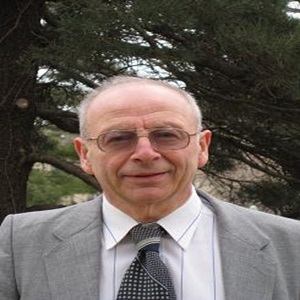Speaker

Alexander G. Ramm
Kansas State University, USA
Biography
Alexander G. Ramm was born in Russia, emigrated to USA in 1979 and is a US citizen. He is Professor Emeritus of Mathematics with broad interests in analysis, scattering theory, inverse problems, theoretical physics, engineering, signal estimation, tomography, theoretical numerical analysis and applied mathematics. He is an author of 725 research papers, 23 research monographs and an editor of 3 books. He has lectured at many Universities throughout the world, gave more than 155 invited and plenary talks at various Conferences and had supervised 11 Ph.D students. He was Fulbright Research Professor in Israel and Ukraine; distinguished visiting professor in Mexico and Egypt; Mercator Professor in Germany; Research Professor in France; invited plenary speaker at the 7-th PACOM; he won Khwarizmi international award in 2004 and received other honors. A.G.Ramm was the first to prove uniqueness of the solution to inverse scattering problems with fixed-energy scattering data; the first to prove uniqueness of the solution to inverse scattering problems with non-over-determined scattering data and the first to study inverse scattering problems with under-determined scattering data. He studied inverse scattering problems for potential scattering and for scattering by obstacles. He solved many specific inverse problems and developed new methods and ideas in the area of inverse scattering problems. He introduced the notion of Property C for a pair of differential operators and applied Property C for one-dimensional and multi-dimensional inverse scattering problems. A. G. Ramm solved many-body wave scattering problem when the bodies are small particles of arbitrary shapes, assuming that a much less than d and d is much less that λ, where a is the characteristic size of the particles, d is the minimal distance between neighboring particles, and λ is the wavelength in the material in which the small particles are embedded. Multiple scattering is essential under these assumptions. He used this theory to give a theory for creating materials with a desired refraction coefficient and materials with a desired wave-focusing property. A. G. Ramm gave a recipe for creating materials with a desired refraction coefficient. These results attracted attention of the scientists working in nanotechnology. A. G. Ramm gave formulas for the scattering amplitude for scalar and electromagnetic waves by small bodies of arbitrary shapes and analytical formulas for the polarizability tensors for these bodies. A. G. Ramm gave a solution to the Pompeiu problem, proved the Schiffer’s conjecture and gave many results about symmetry problems for PDE, including first symmetry results in harmonic analysis. A. G. Ramm has developed the Dynamical Systems Method (DSM) for solving linear and nonlinear operator equations, especially ill-posed. These results were used numerically and demonstrated practical efficiency of the DSM. A. G. Ramm developed random fields estimation theory for a wide class of random fields. A. G. Ramm has developed a theory of convolution equations with hyper-singular integrals and solved analytically integral equations with hyper-singular kernels. These results he applied to the study of the NSP (Navier-Stokes problem). As a result, he solved the millennium problem concerning the Navier-Stokes equations. A. G. Ramm formulated and proved the NSP paradox which shows the contradictory nature of the NSP and the non-existence of its solution on the interval t ∈ [0.∞) for the initial data v0(x) 6≡ 0 and f(x, t) = 0. A. G. Ramm has introduced a wide class of domains with non-compact boundaries. He studied the spectral properties of the Schr¨odinger operators in this class of such domains and gave suffient conditions for the absence of eigenvalues on the continuous spectrum of these operators. A. G. Ramm developed the theory of local, pseudolocal and geometrical tomography. He has proved a variety of the results concerning singularities of the Radon transform and developed multidimensional algorithms for finding discontinuities of signals from noisy discrete data.
